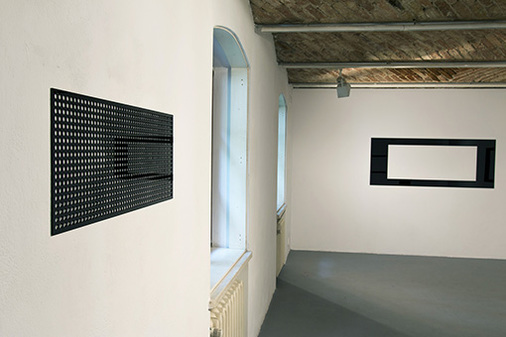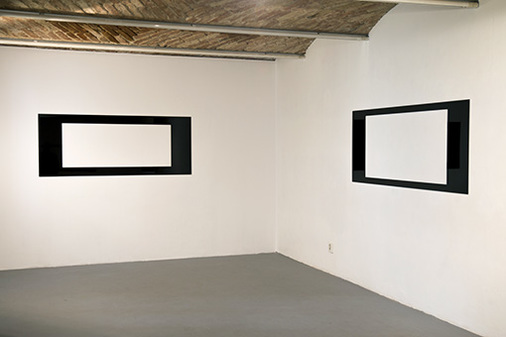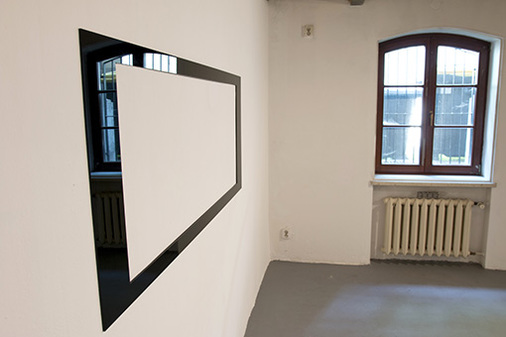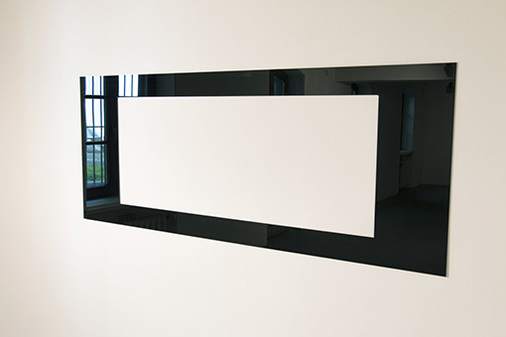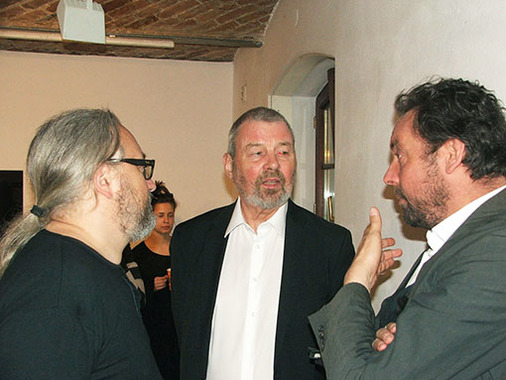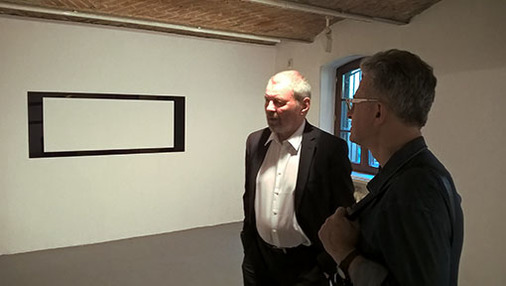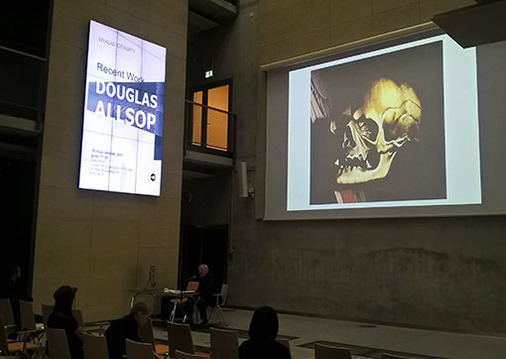DOUGLAS ALLSOP
Jeden poziomy prostokąt, równoległy wzór /
One horizontal rectangle, parallel pattern
15 - 26.05.2017
Douglas Allsop (ur. 1943 r. w Londynie, Anglia); artysta brytyjski, Profesor Emeritus, University of the Arts London, UK (2010), w latach 2006-2010 Profesor of Fine Art Byam Shaw School of Art, University of the Arts London, UK. Jeden z najwybitniejszych przedstawicieli minimalizmu i sztuki konceptualnej. Swoje prace prezentował na wystawach indywidualnych i zbiorowych w galeriach i muzeach m.in. w ‘Fresh Windows-Exchange Rate‘, New York, USA. ‘Metric‘, dr. julius ⁄ ap, Berlin, Niemcy, ‘blind screen‘, sleeper 1, reiach and hall architects, Edinburgh, Szkocja, ‘from here’, Bartha Contemporary, Londyn, Anglia, ‘Farben and Reflexionen‘, Galerie Renate Bender, Monachium, Niemcy, Das Kleine Museum, Weißenstadt, Niemcy, ‘undsoweiter’, Stiftung für konkrete Kunst, Reutlingen, Niemcy, ‘Douglas Allsop’ hebel 121, Bazylea, Szwajcaria, ‘facade‘, Olschweski & Behm, Frankfurt, Niemcy, ‘Fast Surface, Blind Screen and Reflective Editors‘. Douglas Allsop, Professor of Fine Art, Lethaby Gallery, Central Saint Martins College of Art and Design, University of Arts, Londyn, Anglia, ‘blind spot‘, Bartha Contemporary, Londyn, Anglia. Mieszka i pracuje w Londynie i Berlinie.
Prace Douglasa Allsopa można przypisać do sztuki konceptualnej i minimalistycznej w formie wyrazu. Charakteryzują się one prostą formą i uporządkowaniem rzeczywistości. Artysta posługuje się w swoich pracach monochromatyczną kolorystyką, pozornie tylko pozbawioną zmysłowości, opartą na zderzeniu kontrastujących ze sobą form przestrzennych, geometrycznych artykułowanych w czerni i bieli. Jego prace nie tylko zapraszają do kontemplacji, ale także ostatecznie konfrontują widza ze złożoną i wysoce subiektywną naturą widzenia. W roku 2014 Nikolas Van Bartha tak pisał o wystawie „from here” Douglasa Allsopa organizowaną przez Bartha Contemporary w Londynie: Na tej wystawie Allsop nadal bada procesy, które decydują o naszej percepcji wizualnej. Stąd sugeruje szereg punktów widzenia, które zachęcają widza do zbadania tych prac jako instrumentów do zobaczenia. […] Ponieważ nasza unikalna zdolność do ciągłego interpretowania i zrozumienia informacji wizualnych jest podważana przez pozornie uproszczone prace Allsop, ich wygląd stoi w sprzeczności z ich złożonymi i nieustannie rozwijającymi się systemami formalnymi.
---
Douglas Allsop (b. 1943 in London, England); British artist, Professor Emeritus, University of the Arts London, UK (2010), 2006-2010 Professor of Fine Art, Shaw School of Art, London, UK. One of the most outstanding representatives of minimalism and conceptual art. He presented his works at individual and collective exhibitions in galleries and museums e.g.: 'Fresh Windows-Exchange Rate', New York, USA. 'Metric', dr. julius / ap, Berlin, Germany. 'blind screen', sleeper 1, reiach and hall architects, Edinburgh, Scotland. 'from here', Bartha Contemporary, London, England, 'Farben and Reflexionen', Galerie Renate Bender, München, Germany, Das Kleine Museum, Weißenstadt, Germany. 'undsoweiter', Stiftung für konkrete Kunst, Reutlingen, Germany. 'Douglas Allsop' hebel 121, Basel, Switzerland. 'facade', Olschweski & Behm, Frankfurt, Germany. 'Fast Surface, Blind Screen and Reflective Editors'. Douglas Allsop, Professor of Fine Art, Lethaby Gallery, Central Saint Martins College of Art and Design, University of Arts, London, England. 'blind spot', Bartha Contemporary, London, England. He lives and works in London and Berlin.
Minimal and Conceptual Art: both characterize the work of Douglas Allsop. Simplicity and order, impersonal yet sensual, black and white but still reflecting color, and the absence of a personal signature are all features of his creative work. Equally important are space and the individuals who move in it and before his glossy objects, becoming a part of them. His works not only invite contemplation but also ultimately confront the viewer with the complex and highly subjective nature of seeing [Renate Bender]. As the author says: „Black and white are extremes, physically, in terms of perception theory, and metaphorically. And yet between these two points there is a line, a space for unlimited tones and gradation, for differentiation and tension, for seeing and thinking.”

